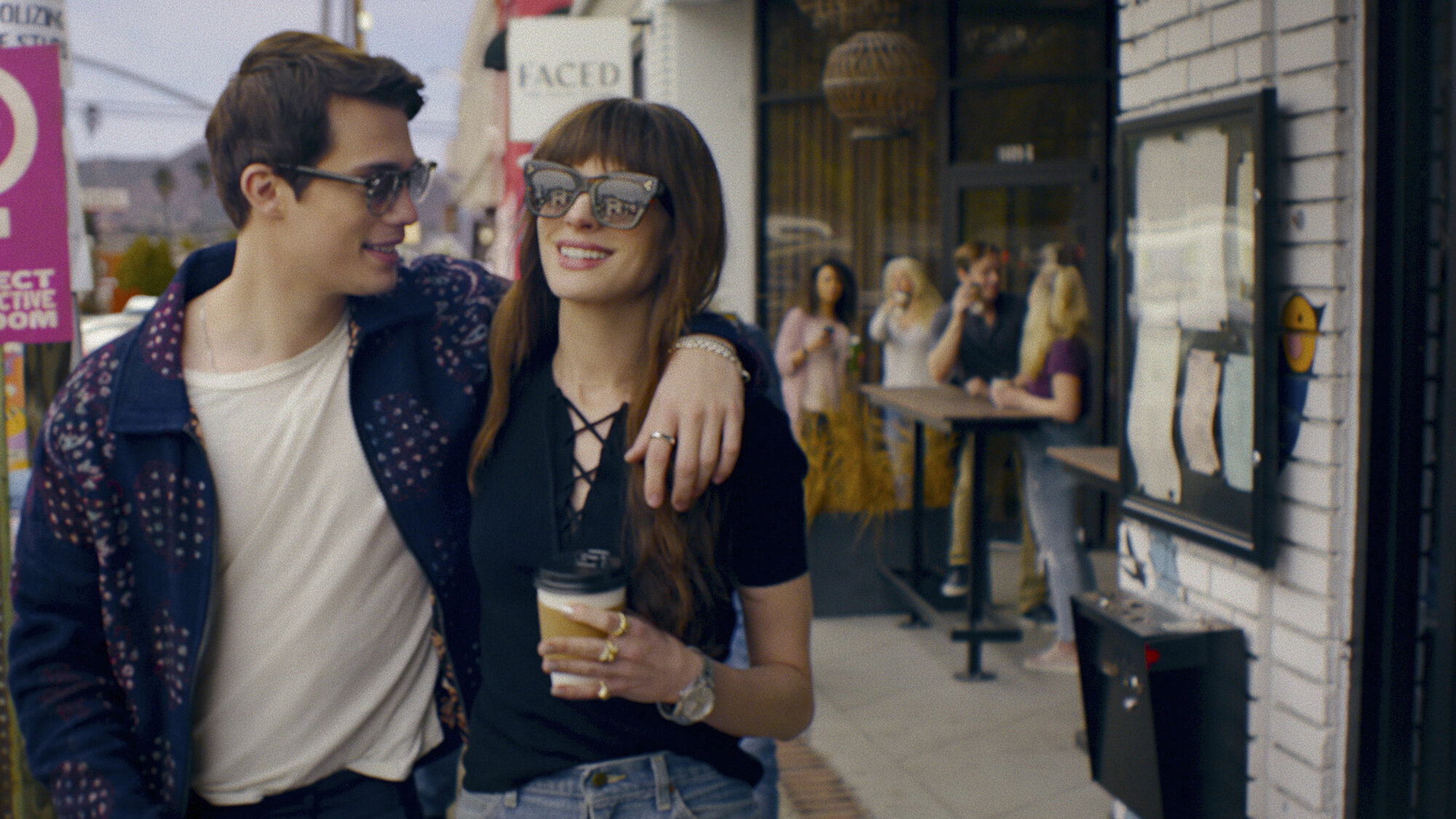[
The Supremes, The Shirelles, and The Crystals, three of the most exemplary Black girl group acts of the 1960s, left immeasurable marks on music history. Their work in the studio and performances in front of live audiences influenced decades of new music artists and styles, and sparked trends in stage and movie musicals.
With February being Black History Month, now is the perfect time to reflect on the impact that Black female music trios have left on pop culture, and how popular musicals like Dreamgirls and Little Shop of Horrors honor their legacies. Both stage productions premiered in the early 1980s and take place in the 1960s, incorporating the popularized doo-wop and soulful pop music stylings of the time period — and both were later adapted into movie musicals.
Dreamgirls and Little Shop of Horrors utilize Black female power trios in different ways while distinctly paying homage to musical artists that came before them. When reflecting on the shows, did they break barriers for Black women in the modern era of musicals and why were composers and audiences drawn to this specific music trend?
Dreamgirls Changes The Game
When Dreamgirls hit the Main Stem in 1981, everybody stopped to listen.
Inspired by the Motown girl group The Supremes, the musical tells the story of a Chicago-based Black female power trio called The Dreams — comprised of Effie White, Deena Jones, and Lorrell Robinson — navigating the highs and lows of show business in the 1960s.
As The Dreams reach new levels of success, Effie begins to behave erratically, which causes riffs between her and the musical group, as well as her and her manipulative manager. The Broadway musical features music by Henry Krieger with lyrics and book by Tom Eyen, and won six Tony Awards and two Grammy Awards upon its premiere.
Like many popular stage musicals of its era, Dreamgirls took a long and winding road towards the silver screen. After a few failed attempts, the production was finally adapted into a 2006 flick that managed to continue the stage production’s acclaim with both critics and audiences. Grossing north of $155 million in worldwide box office, the movie won two of the eight Academy Awards it was nominated for, including a historic Best Supporting Actress win for Jennifer Hudson’s turn as Effie – though the jury is still out for why she wasn’t in the race for Best Lead Actress. In her film debut, the then 25-year-old Hudson became the youngest African-American person to win an acting Academy Award, and remains one of just nine Black women to win that specific award, and one of only 10 Black women to ever win an acting Academy Award in the Oscars’ 95-year history.
Speaking on the memorableness of the movie, cultural critic and Pulitzer finalist Soraya Nadia McDonald tells Decider that Dreamgirls is what first comes to mind when considering the Black showgirl character. “Not necessarily because of the Broadway show, but because of the movie musical with Jennifer Hudson, Eddie Murphy, and Beyoncé,” she says.
Little Shop of Horrors: Girl Groups as the Greek Chorus of Skid Row
Debuting on stage around the same time as Dreamgirls was Alan Menken and Howard Ashman’s Little Shop of Horrors, based on the cult B-movie with the same name. In this musical about a man-eating plant, the trio — named Crystal, Ronette, and Chiffon after three of the most influential girl groups of the time — serve as a Greek chorus to guide the core storyline.
“As musical theater has evolved, it’s taken from what’s popular in music, which is why we’ve gone from shows like The Sound of Music, full of Broadway standards, to shows like Hamilton, inspired by modern rap and hip-hop,” shares Pop Culture Planet founder Kristen Maldonado.
Regarding the characterization of the trio in Little Shop of Horrors, referred to as the Urchins, Maldonado says, “It was a smart choice to model the Greek Chorus of the Urchins in Little Shop of Horrors after the legendary Black girl groups of the 1960s. Their presence helps signify that the show takes place in the early ’60s and it ties into the doo-wop and Motown musical stylings composed by Alan Menken. The trio narrates Seymour’s story, while also dropping in their own commentary and foreshadowing, making them the most dynamic part of the show.”
McDonald also relates the specific roles to the music of the 1960s. “I think that the particular trope of these trios rose in popularity and was important because it’s mirroring the ubiquity and cultural importance of Motown. The development of that recording studio and label had so much impact on that particular era of American history,” McDonald shares. “It ends up providing a soundtrack for this time in America where everything is shifting incredibly fast, not just in social terms, but media as well.” She cites Berry Gordy’s creation of Motown as a crucial time for the creation of the “Black pop celebrity.”

McDonald draws comparisons between Motown and its popularity to the draw to commercial theater. “The melody is identifiable, easy to sing along with, and they lend themselves to really pleasant harmonies, and all of those elements are ones that you end up seeing when these groups and these tropes began to show up in musicals, particularly when we’re thinking about Broadway,” says the journalist.
“There’s a lot of commonality between Motown and what makes Motown successful, and the constructs of commercial theater,” McDonald says. “These are both forms where you are looking for an audience that will pay good money to see these acts, and in return what they are expecting is to be a little bit dazzled but mostly to feel good.”
The Little Shop of Horrors musical was adapted into a film in 1986 starring Rick Moranis, Ellen Greene, and Steve Martin in main roles and Tichina Arnold, Michelle Weeks, and Tisha Campbell as the trio.
“Part of what they’re doing is functioning as an audience surrogate. They are reflecting our own emotions and reactions as we are watching the action and the plot unfold on stage,” McDonald explains about the Urchins. “In that way, particularly in something like Little Shop, if you have that racial difference, they can become a sort of window dressing even though they aren’t the main parts of the story.”
McDonald finds that the trope also adds a “variety show” element to productions, given that the character’s are usually attractive and provide comedic relief. “They are adding a sort of punctuation, or a frame for the rest of the show. They are not necessarily the focus, but they provide a vital element. They provide a dopamine hit of nostalgia.”
Is There A Lasting Legacy?
Little Shop of Horrors and Dreamgirls have stood the test of time, and remain important works in the musical community. The Dreamgirls movie adaptation garnered widespread critical acclaim for Hudson, including a shout-out from Oprah, who called her performance a “religious experience,” and the show later premiered on the West End in London, which sparked rumors of a Broadway transfer.
But for McDonald, she isn’t quite sure if Dreamgirls broke barriers.
“I think it created a convenient box for talented Black women working in theater that can be confining,” says McDonald. “The show benefits from their undeniably powerful and pleasing voices without necessarily having to invest in the women as main characters.”
Prime examples are Little Shop of Horrors and the Dynamites in Hairspray.
“Dreamgirls is a show built entirely around a girl group, obviously, but these roles continue to persist as a way of adding color and interest without pulling too much focus from usually-white leads, which is a reflection of the way a lot of white folks at the time engaged with Motown artists,” McDonald says. “That’s something Gordy knew because he was reticent and uncomfortable with Motown artists speaking up politically.”

On the flip side, Little Shop of Horrors has occupied off-Broadway’s Westside Theater for over four years, and recently saw acclaimed productions at the John F. Kennedy Center of Performing Arts in Washington D.C. and the historical Pasadena Playhouse in California.
There was also rumors of a movie adaptation in 2020, starring Taron Egerton and Scarlett Johansson, but it has been stuck in development hell since the COVID-19 pandemic.
The characters Seymour and Audrey, inarguably the key players of Little Shop of Horrors, have traditionally been portrayed on stage by white actors, with Groff and Blanchard, Josh Radnor and Megan Hilty, Jeremy Jordan, Maude Apatow, and Evan Rachel Wood, taking on the roles. There are few instances where Seymour and Audrey have been played by people of color, and even fewer instances where they were played by Black actors, notably Corbin Bleu, Michaela Jaé Rodriguez, and Joy Woods.
Dreamgirls and other musicals using the Black female power trio trope seem to exist in the liminal space between celebration and disheartenment. As expressed by Broadway veteran Rita Moreno after sparking backlash for dismissing criticism directed at the 2021 movie musical In the Heights for its lack of dark-skinned leads: “It is so easy to forget how celebration for some is lament for others.” While the specific trope often exists as tributes to iconic Black women in music history, it can also be limiting within certain contexts. Effie White is a central player in her story, but can the same be said for the Urchins and the Dynamites?
To that, Maldonado remembers Dreamgirls as a show with a lasting legacy. “The legacy that Dreamgirls has is palpable and its music truly stands the test of time… Jennifer Holliday was catapulted into superstardom at just 21 years old for singing ‘And I’m Telling You I’m Not Going,’ winning a Tony and a Grammy, while Jennifer Hudson’s career blew up after she won the Oscar for her debut role,” she said. “Now she’s the youngest woman and second Black woman to EGOT — it’s incredibly inspiring to see.”







